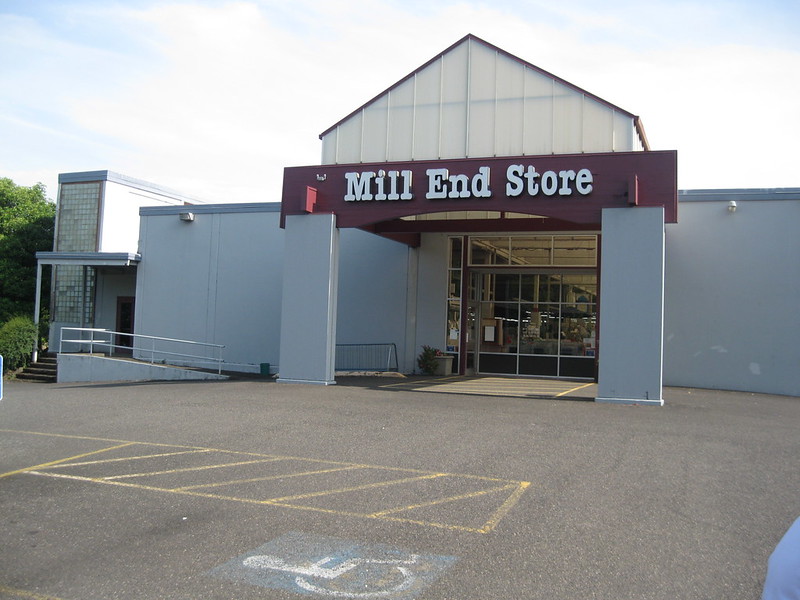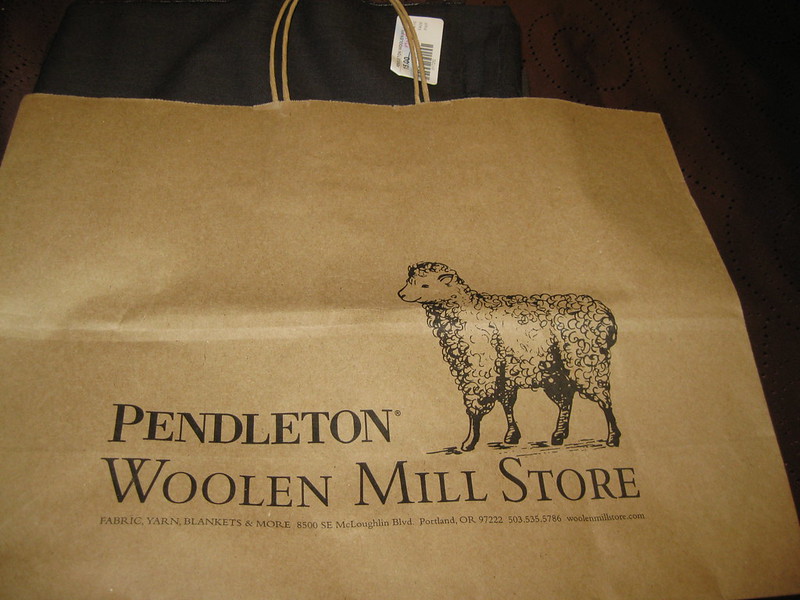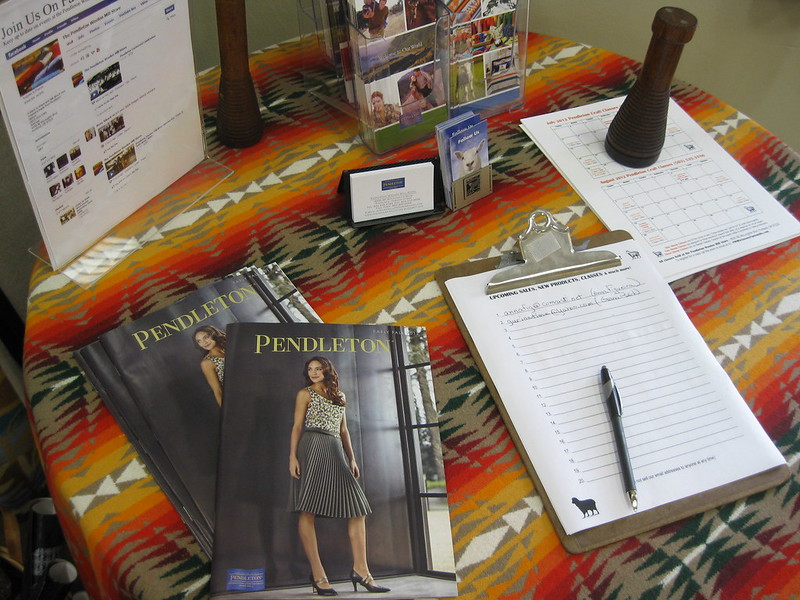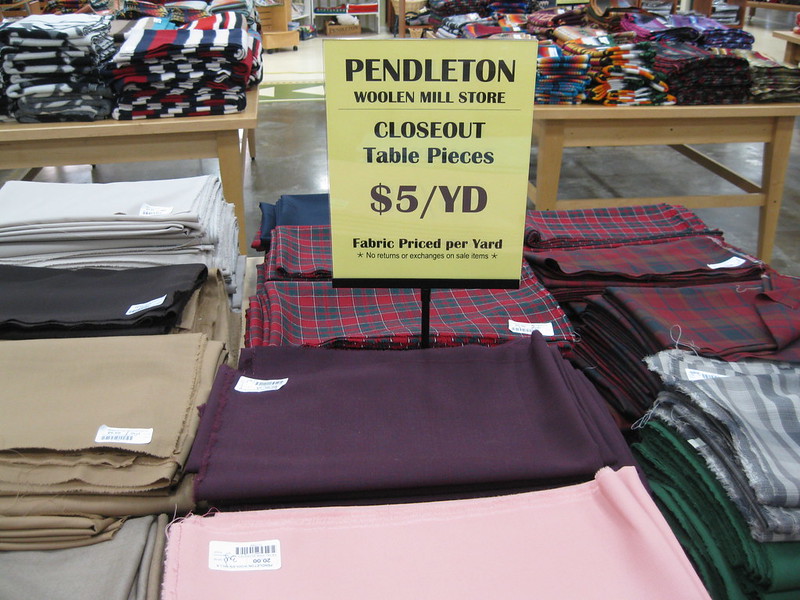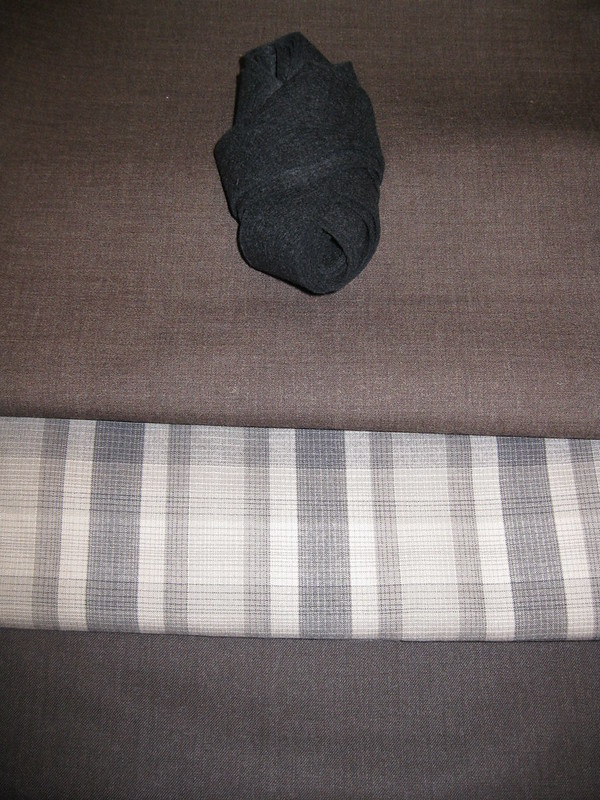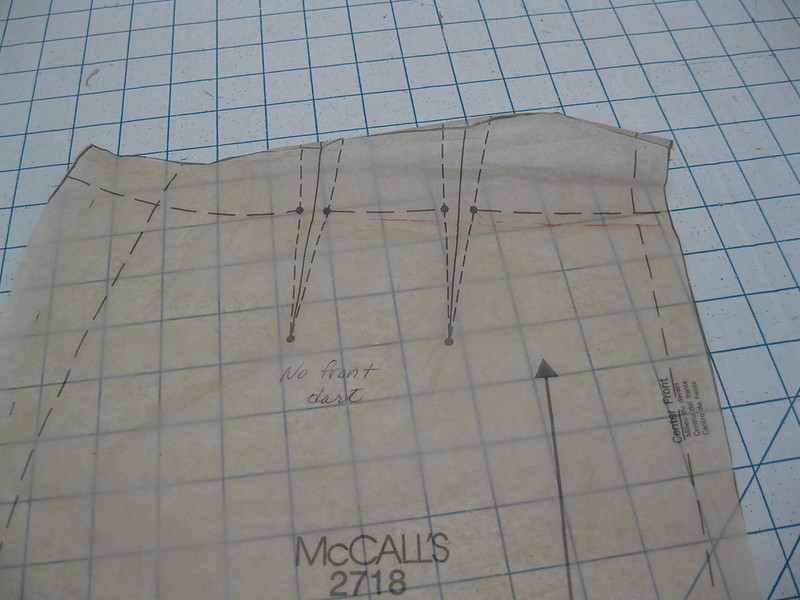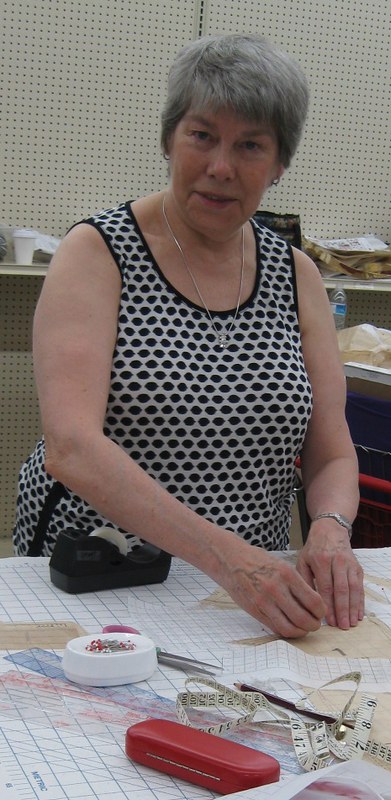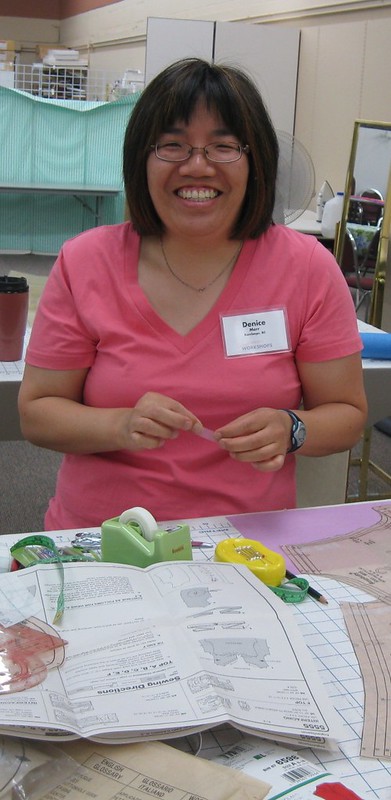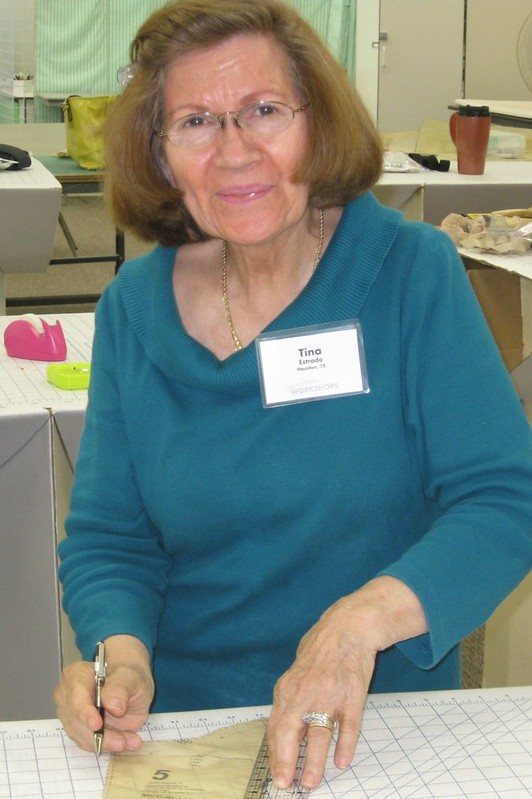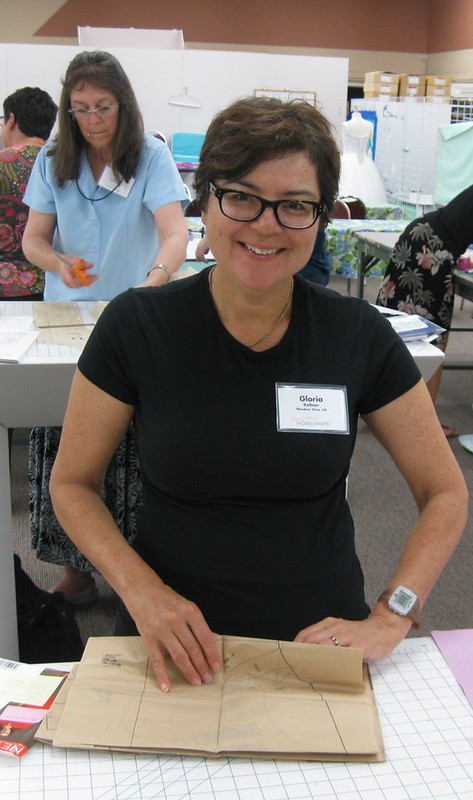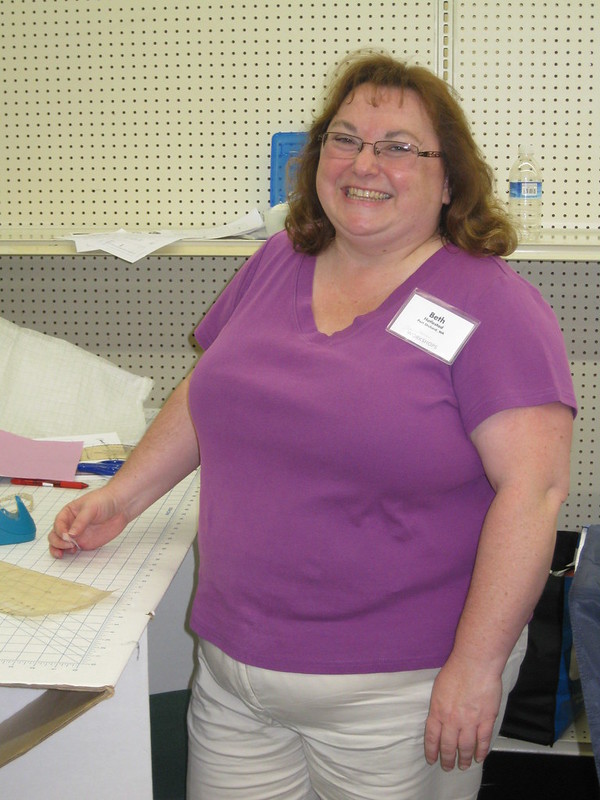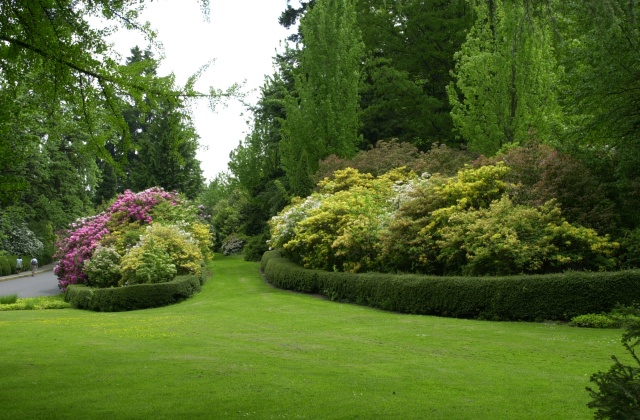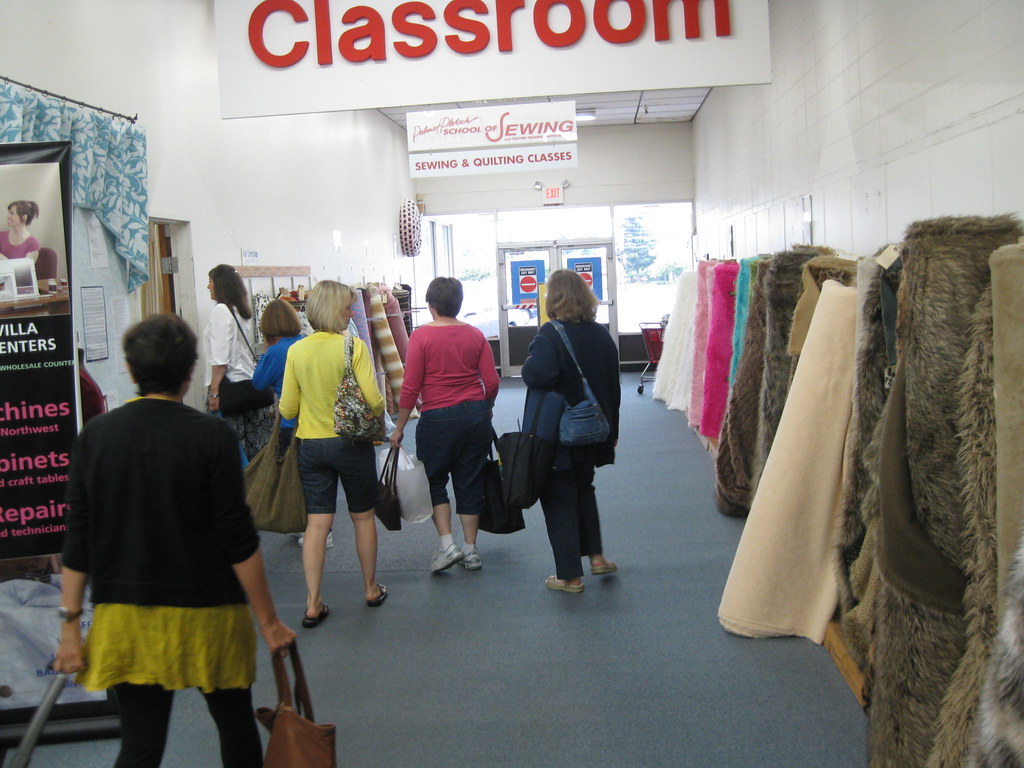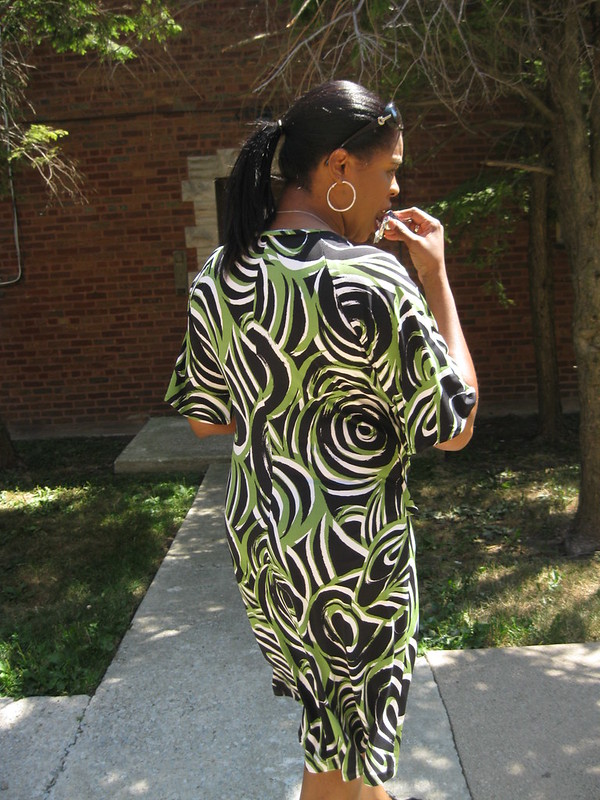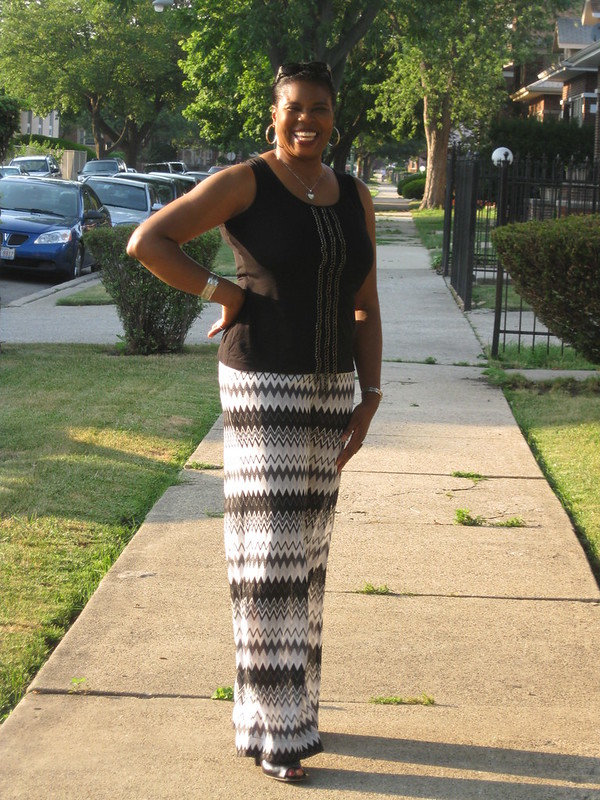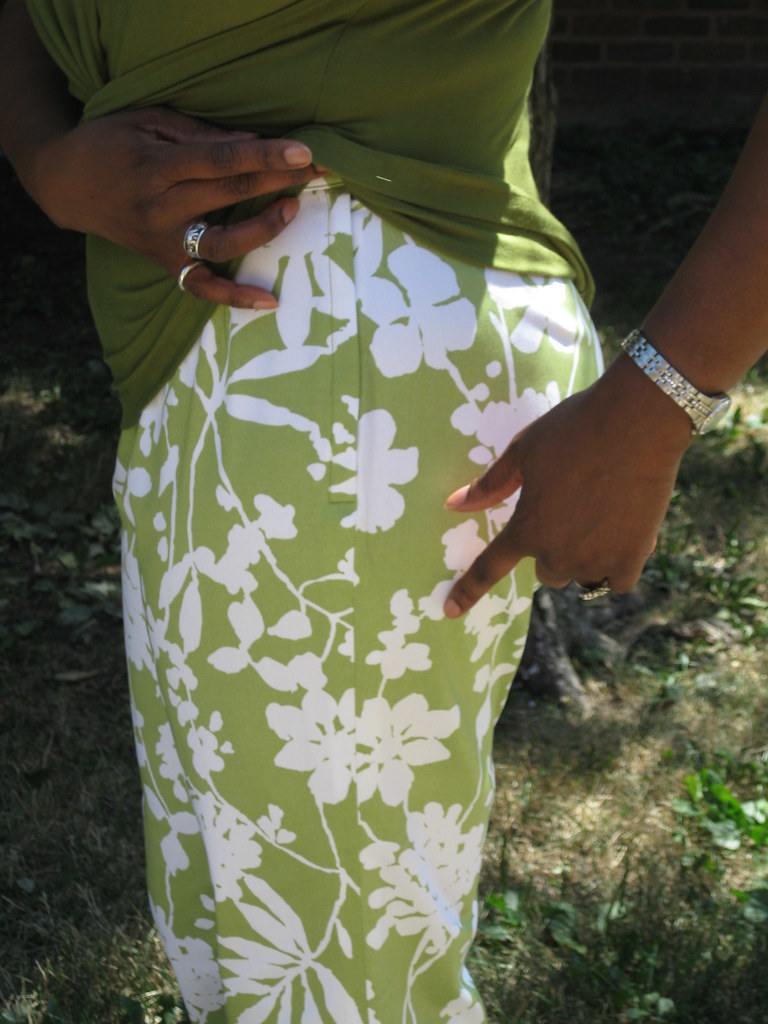Most of the Fit Workshop participants signed up for the
Fabric Shopping Day. We started early
Tuesday morning with our first stop at the Mill End Store.
Mill End Store
9701 S.E> McLoughlin Blvd
Milwaukie, OR 97222
(503) 786-1234
This store is huge and has a wide section of textiles and notions. Within 20 minutes of my shopping experience,
I saw dozens for fabrics I’d like to purchase.
But I forced myself to be reasonable.
I already own enough fabric to keep me sewing for months.
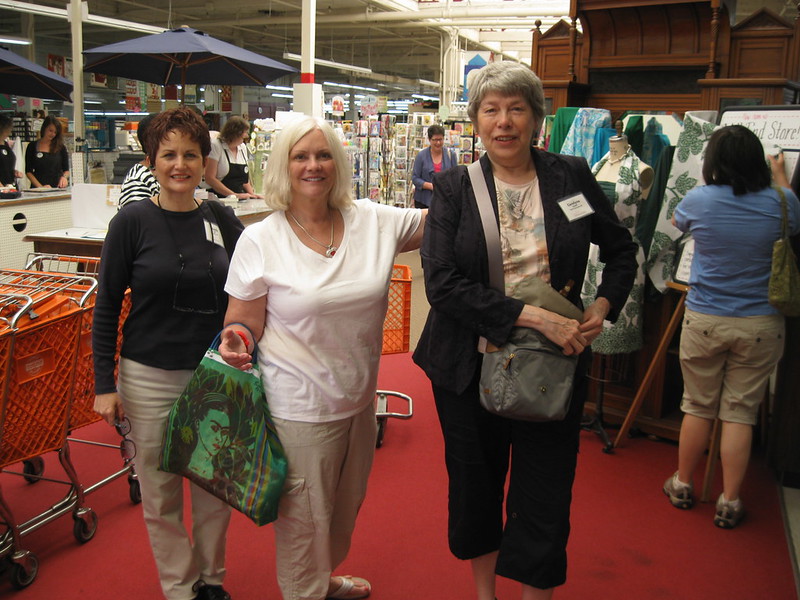 |
| Wendy, Lisa, Carolyne |
Anyway, I entered the store with an idea of what I wanted to buy: find cloth for my Chanel jacket, woolen for
slacks, and some pretty brocade for the pleated Vogue dress. I was able to find two out of the three plus
a few extras. There was even something
in the basket for my DD. (I’m always
thinking about her when I shop.) She could
use a few dresses and some slacks for work.
In the end, my haul included several yards of cloth:
Black and Purple wool suiting (3 yds)
Purple silky polyester (2.5 yds)
Fuchsia rayon (3 yds)
Grey wool suiting (4 yds)
Grey, pink, and cream chiffon silk blend (2.5 yds)
Medium brown wool (2.5 yds)
Medium brown, cream, orange tweedy boucle (2.5 yds)
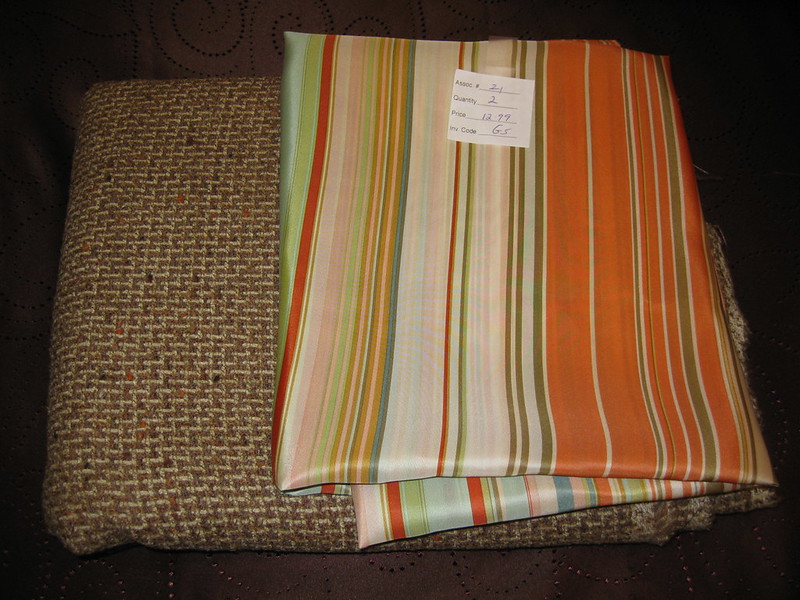 |
| Fabric for Chanel Jacket |
Orange, cream, green and brown striped silk (2 yds)
Their prices are similar to other mid-range fabric
merchants. (Note: Palmer/Pletsch tour participants received a
20% discount.)
The sales associates were polite and helpful. At least two people asked if they could help
me find something.
The quality of the fabric was very good. I didn’t really see any fabric that was of
poor quality. They did have a remnant
section that I didn’t have a chance to visit.
I would certainly shop at the Mill End Store again. They have a very large section of fabrics,
natural and synthetic, for home dec and fashion sewing. If you visit Portland, stop by the Mill End
Store.
More about the Mill End Store
can be found on their website: Mill End Store
Next Merchant – Pendleton Woolen Mill Store
8500 SE McLoughlin Blvd.
Portland, OR 97222
503-535-5786
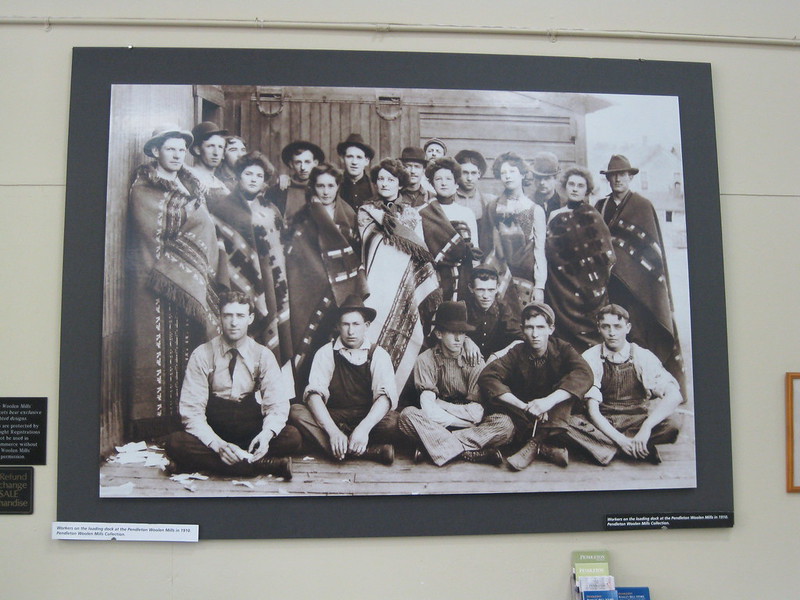 |
| Pendleton Mill Workers |
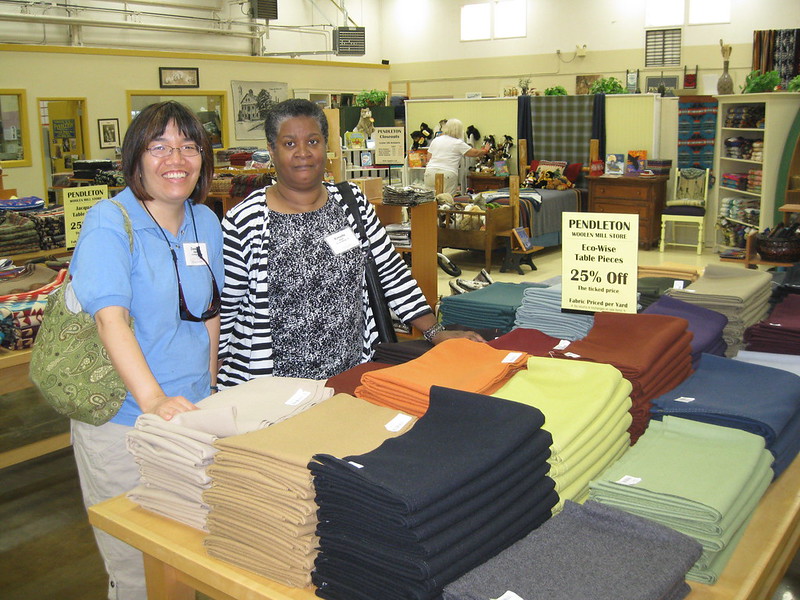 |
| Denice and Kimette |
You should put the Pendleton Woolen Mill Store at the top of
your “To do list while in Portland”. Pendleton
WMS has woolen for a fraction of the cost.
I do mean fraction. There were
several tables loaded with woolens for a 4th, 3rd or half
off the original labeled price. I was
able to grab three pieces of woolen, two – two and half yards each, for $5.00
per yard. I don’t know of any store that
can beat that price. Many of the fabrics
on the discount tables were also on rolls.
So you could have a sale associate cut any length as long as it was
available.
There were interesting displays throughout the store. Some I liked and thought maybe one day I
would try something like that. In the
meantime, I only selected common colors and one plaid.
The sales associates were polite and friendly. I also purchased some felt binding in
black. Amy, the funny sales associate,
kindly helped a few of us with our purchase of the binding.
Their fabric selection is limited to woolens, but the
quality of their products is outstanding.
I enjoyed my shopping experience and would shop there again.
Josephine Dry Goods
Down Town Portland
521 SW 11th Avenue
Portland, OR 97205
503-224-4202
Josephine was the third store on the fabric shopping tour. The
store is small compared to the Mill End Store.
They sell fine fabrics at competitive prices. By the time we arrived at Josephine’s, I was
in “look” only mode as I had shop enough during this shopping tour. The sales people were friendly and very
helpful.
My looking experience was good. I could see myself shopping there again. Josephine offers sewing classes for all skill
levels; they also offer several classes on specific construction techniques. Take a tour of their website which includes a
photo gallery of some of the classes they offer.
Josephine’s has gorgeous displays throughout the store. Some appear to be student projects. See gallery of photos on their website for
more.
That same afternoon, I was scheduled to have my color
analysis done by Ethel Harms. So I
missed the final stop at Button Emporium and Ribbonry, 1016 SW Taylor,
503-228-6372.
Fabric Depot, Inc.
700 SE 122nd
Portland, OR 97233
503-252-6267
800-392-3376
My final store review is on the Fabric Depot, where the
Palmer/Pletsch School of Sewing is housed.
The store is huge. The quality of
service, fabric and notions is excellent.
They do have a huge selection of cottons, of all variety. They also stock silks, rayons, woolens, and
various synthetic fibers. In some ways
it reminds me of a Super, super JoAnn’s and Vogue Fabrics rolled into one. They carry a better quality of fabric (than
JoAnn’s) and a better section of notions, books, and crafting goods. They provide special order and wholesale
services as well.
The Palmer/Pletsch students received a 30% discount on all
products purchased there. They stock Palmer/Pletsch
books, DVD’s, and notions. I purchased
some of the things required for the Fit Workshop. My purchases also included two fabrics: stretch sateen print and a chiffon print.
I mentioned notions in the previous post. These helpful notions were on the class supply
list. You might find them useful as
well. They are: (1) 1/2” scotch brand
magic tape. It works better than the
wider variety for pattern alterations. (2)
Magnetic pin holder – I purchased a cling on that attaches to clothing. Very handy.
(3) 1 3/8” extra fine glass head pins.
They are great for pinning tissue patterns together for fitting. (4) And finally, Perfect Pattern Paper tissue
for alterations and tissue-fitting.
That’s all for now.
Have a great weekend!
C
